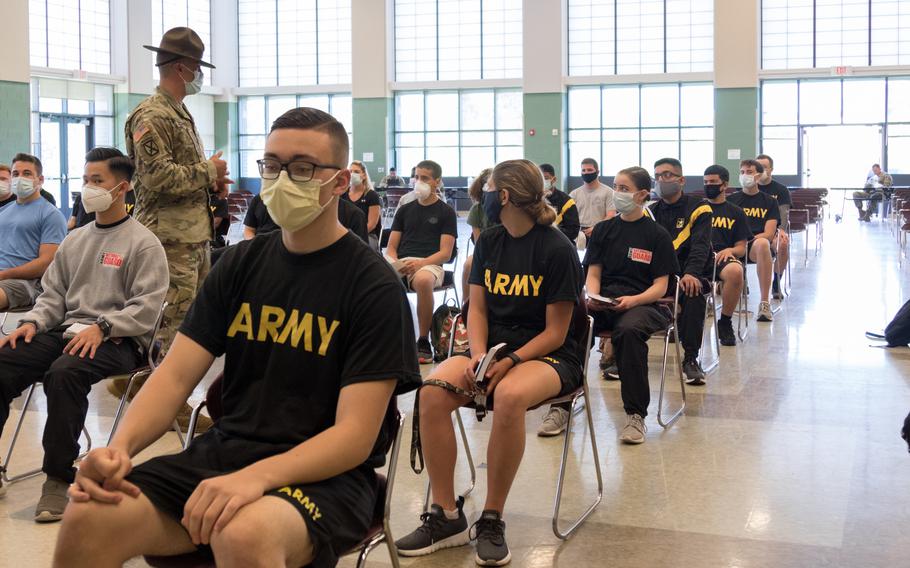
Army Sgt. 1st Class David Rodriguez talks to Army National Guard recruits at the Middletown Armed Forces Reserve Center in Connecticut on June 20, 2020. Army’s budget request for 2023 calls for fewer soldiers in uniform. Pentagon officials said one reason for the Army seeking a smaller force is a tough recruiting environment in which the military is struggling to compete for recruits given historically low unemployment rates. (Matthew Lucibello/U.S. Army)
The Army’s budget request for 2023 calls for fewer soldiers in uniform even as the service seeks $3 billion more in annual funding, according to budget documents released Monday.
The $177.5 billion spending proposal, up from last year’s $174.7 billion, reverses multiple years of budget cutbacks for the Army, which is during a weapons modernization push that has been challenged by budget constraints.
But while spending is going up, the number of soldiers slated to serve in the Army would fall if the budget request becomes law. The Army’s end strength would be reduced from 1,010,500 to 998,500, making a force of 473,000 active-duty soldiers, 336,000 National Guard troops and 189,500 in the Reserve.
Pentagon officials said one reason for the Army seeking a smaller active force is a tough recruiting environment in which the military is struggling to compete for recruits given historically low unemployment rates.
“This is not a budget driven decision. It is about maintaining the high quality of our talent,” Undersecretary of the Army Gabe Camarillo said.
He said the Army will build the active force back up as the recruiting environment improves. Other military branches also have faced difficulties in recruiting new members given increased competition in the civilian sector.
One of the drivers of growth is the Army’s operation budget, which calls for $58.3 billion, up from $55.3 billion in 2022. That will support increased flying hours for aviators and 22 combat training center rotations, up from 20 last year and other initiatives.
There also is a $3.2 billion increase for military personnel, adding up to $69.1 billion overall. This is connected to a pay increase for troops.
The Army said it also is upping funds to support “climate resilience,” expanding nontactical electric vehicles and training in extreme weather conditions.
The Army said it will be able to “maintain momentum” with its modernization push, prioritizing things such as advances in long-range precision fires, missile defense and next-generation combat vehicles. The Army also wants funding for a prototype of a long-range hypersonic missile system with the aim of fielding the first battery in the 2023 fiscal year.
The Army also wants to spend more on missile procurement, $21.3 billion, including more investments in aircraft and munitions, while scaling back on new investments in Abrams tanks and Stryker combat vehicles.
Overseas, the Army is requesting $14.6 billion for operations, more than $4 billion of which supports the European Deterrence Initiative focused on deterring Russian aggression.